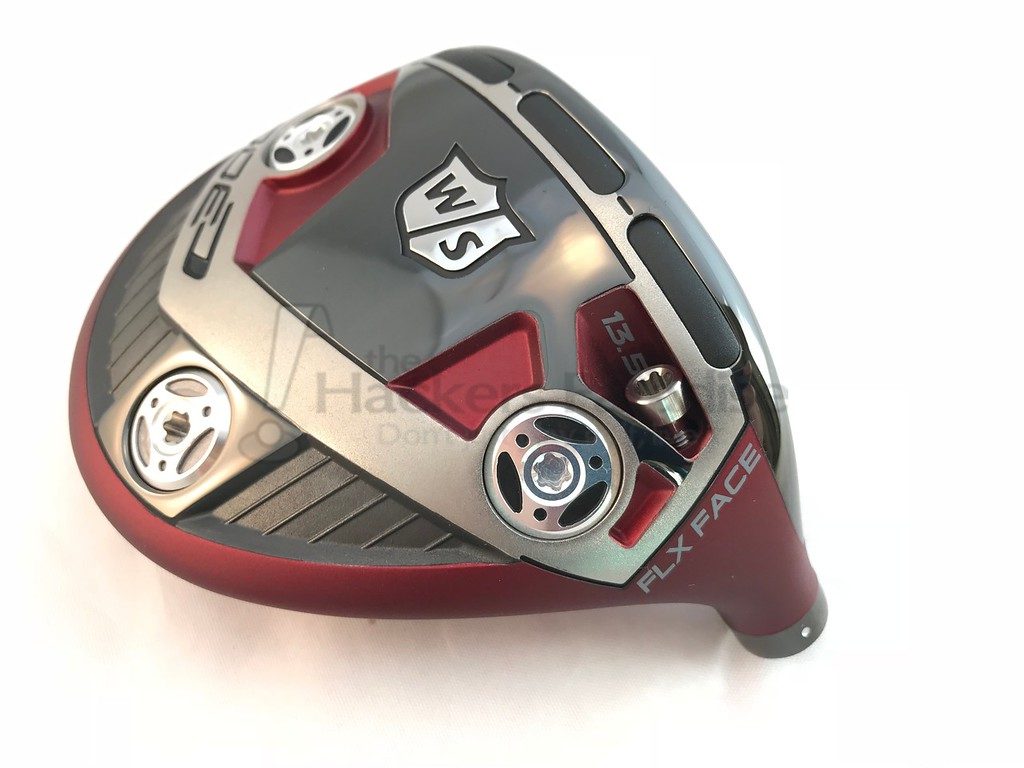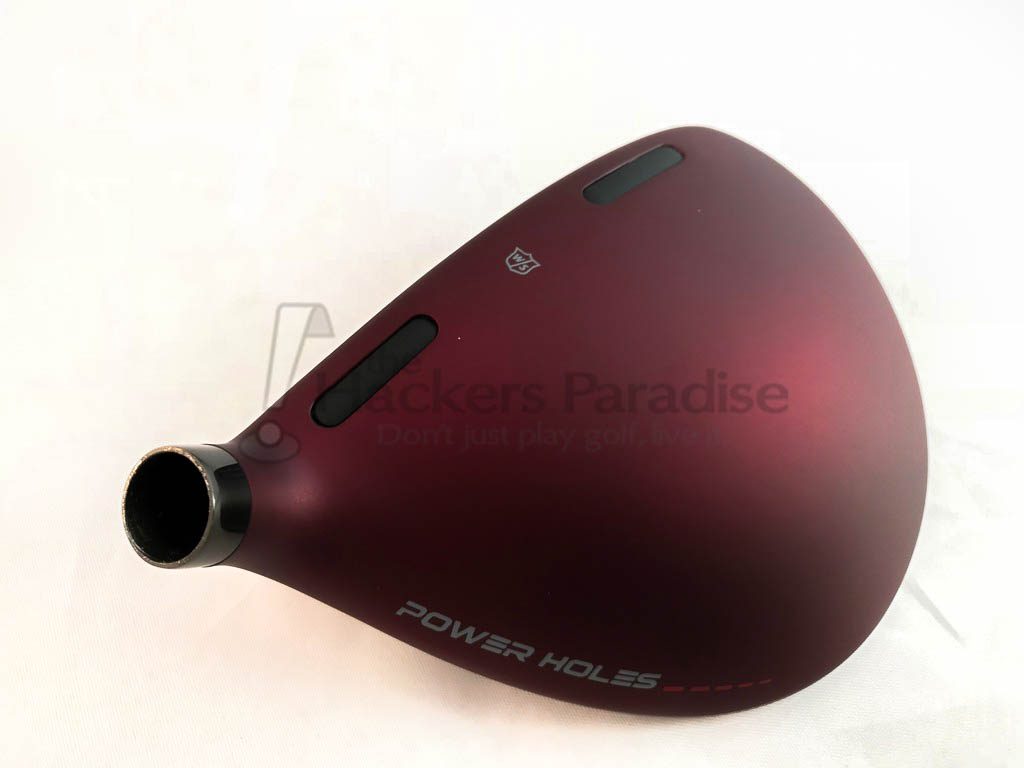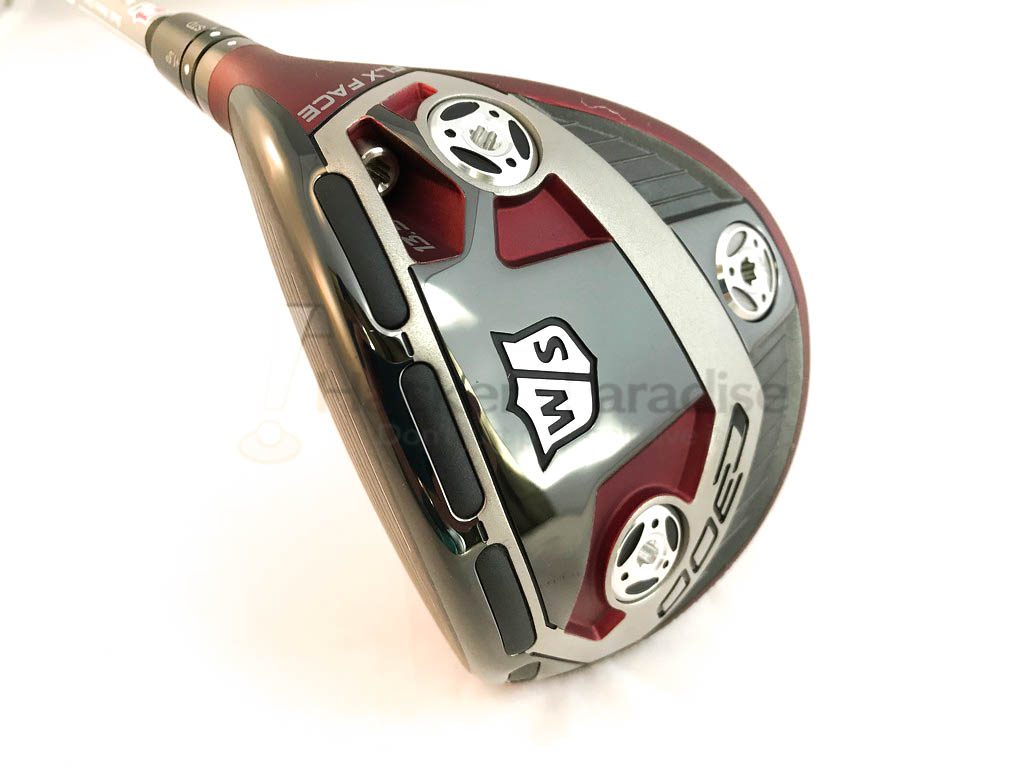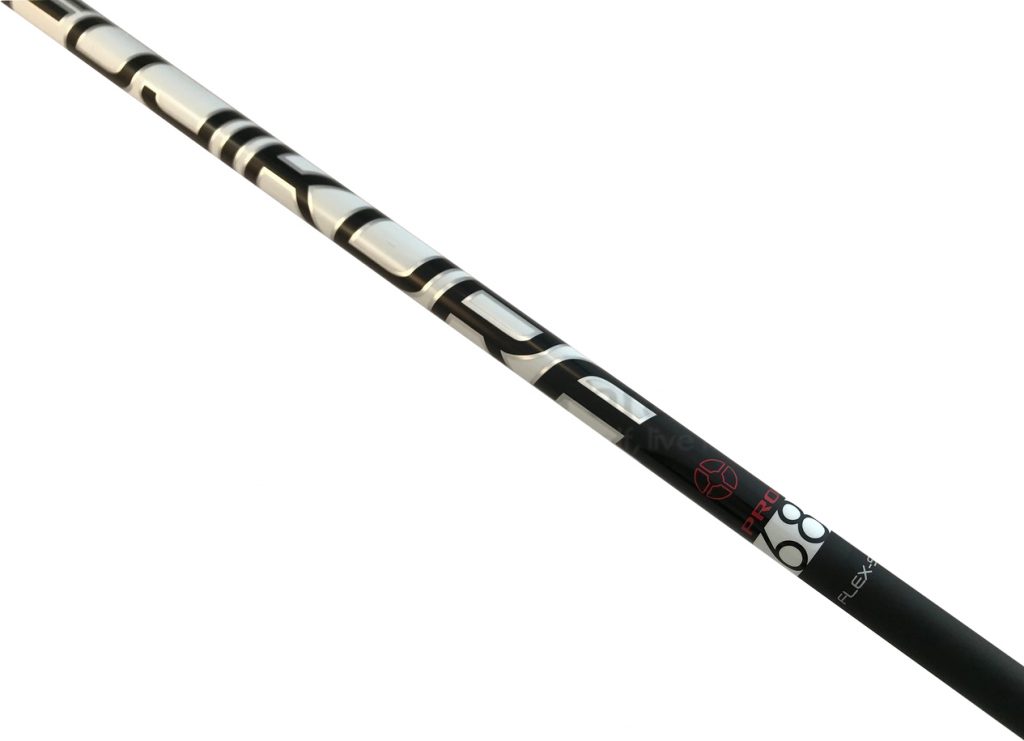Wilson Staff Golf C300 Fairway Wood Review
The conversation on THP about the C300 irons was incredibly positive, and carried throughout the year after a fantastic event with Wilson. It should come as no surprise that the latest fairway, hybrid, and driver would come with much anticipation. Fortunately, Wilson did it right. Subtle inclusion of the power holes on the crown make this fairway unique, while increasing the sweet spot for better results throughout the face.
Focusing first on the aesthetics of the head, Wilson has done an excellent job of pairing their exciting power hole technology with a head finish that helps to blend it into the head and not appear gaudy at address. The matte red and black profile is very unique to Wilson, and it is of the opinion of the reviewer that the finish is one of the best if not the best looking Wilson heads ever produced at address. On the bottom of the head it is quite obvious that plenty of technology is being utilized, with three weight ports, an adjustable hosel, and more power holes near the face.
The most obvious question consumers will have for the C300 Fairway by Wilson based on their marketing has to be “What is Power Hole Technology?” Wilson explains it as the following: Urethane-filled through holes strategically positioned around the face of C300 series clubs, which minimize contact between the body and face while providing maximum flex and expanded sweet spot. Plenty to take in, but the most obvious takeaway is a potential for greater success across a larger portion of the face. In fact, Wilson provides a fantastic image of face deflection with and without the power holes, which clearly represents a larger area from the central contact location to maximize distance gains.
But does it work? It is quite hard to share such findings without a comparable head without power holes, but testing did prove that not only did the feedback to the hands and ears seem repetitively more positive than usual, but also, the numbers seen on GC2 that were generated from this club were quite strong overall, despite some situations where contact strayed away from center. While it is quite good to have a club that clearly states in sound and feedback where the ball was struck on the face, a club that muddies that comprehension by expanding the quality-of-contact location is great for any golfer. Naturally, extreme heel/toe/high/low contact generates unfavorable results that are much reduced in distance and quality from central face contact, but that must continue to be expected despite the technology applied.
For golfers who like to tinker with their heads, Wilson has provided not only a large amount of adjustability with their easy to change adapter (add up to two degrees of loft or subtract one degree), but also three weight ports around the base of the head that can be altered to accommodate shot shape preference. Safe to assume that any swing type will have the ability to make C300 adapt to their game rather than the other way around, and that proved a reality during testing with slight changes to the head altering the expected shot shape and launch of the ball.
Moving on to the actual experiences of the C300 Fairway Wood by Wilson, at 13.5 degrees of loft this fairway was destined to promote penetrating flight with a mid to limited range of spin, and that it did. This particular tester, who struggles to keep spin at bay, was managing shots that fell under the 3,000 spin rate at a launch of 11.5 degrees and an ideal peak height of 31 yards. For a stock stiff setup, this is definitely an accomplishment worth incorporating into the review. With that in mind, golfers who are more inclined to seek clubs that help to promote launch and spin will most definitely want to seek out the higher lofted offerings in C300 (comes in 13.5 RH, 15 RH/LH, and 18 RH/LH) to support their needs. For most who experienced the C300 during testing, the launch was in the mid to low/mid realm, with the exception of the high ball hitters who managed to elevate it a fair bit when on a tee. Even the golfers who typically see a higher ball flight found nice mid launch off the fairway lies, launching aggressively and easily off the turf.
Finally, to the sound of C300, it was a surprise. Not unlike the commentary around the visual quality of the latest fairway offering from Wilson, this may very well be one of the best sounding fairways they have ever produced. There is a very subtle metallic sound that is almost muted in the way it is presented, yet it disappears as you really make center face connection. This is obviously magnified by the faster and more powerful hitters of the golf ball, but in many ways shares a familiar sound quality regardless of the player. A nice accomplishment considering the technology applied.
For much of the testing experience, the C300 made it easy to enjoy, and surprised a number of golfers. This fairway will more than likely receive a similarly positive response to their iron family that was so well received, and really ought to be considered by golfers who are seeking great ball speed on a club that promotes maintained contact quality away from central contact. For more information on the C300 fairway wood, visit www.Wilson.com.
















Excellent write up Dan! This looks like a phenomenal club, especially for some one seeking a lower spinning fairway. The red color looks really really good!
Very nice review Dan! I really like the looks of these and am honestly somewhat surprised, in a good way, regarding your comments about the sound. Performance sounds to be on par with looks and sound.
Very well done Dan. I was expecting good results but wasnt expecting to hear the comments about the sound so thats very exciting. This looks like a winner for WS
Good stuff, Dan. That is the best looking fairway I’ve seen in a while from the top.
Nice review Dan! I’m looking forward to more hands-on research by other THPers. I think the red look is really distinctive and a nice job by W/S (I think of red/black/white as Wilson Staff colors)
Great write up Dan! Such a solid lineup from W/S this year.
Thank You,
It sounds Good, Giving Valuable information.
We also one of the Best Golf Courses in Hyderabad with top facilities.
For more details visit:
http://www.vootygolfcounty.com/
Nice write-up Dan.
I like the added adjustability as well as the color.
Very curious about the power hole tech.